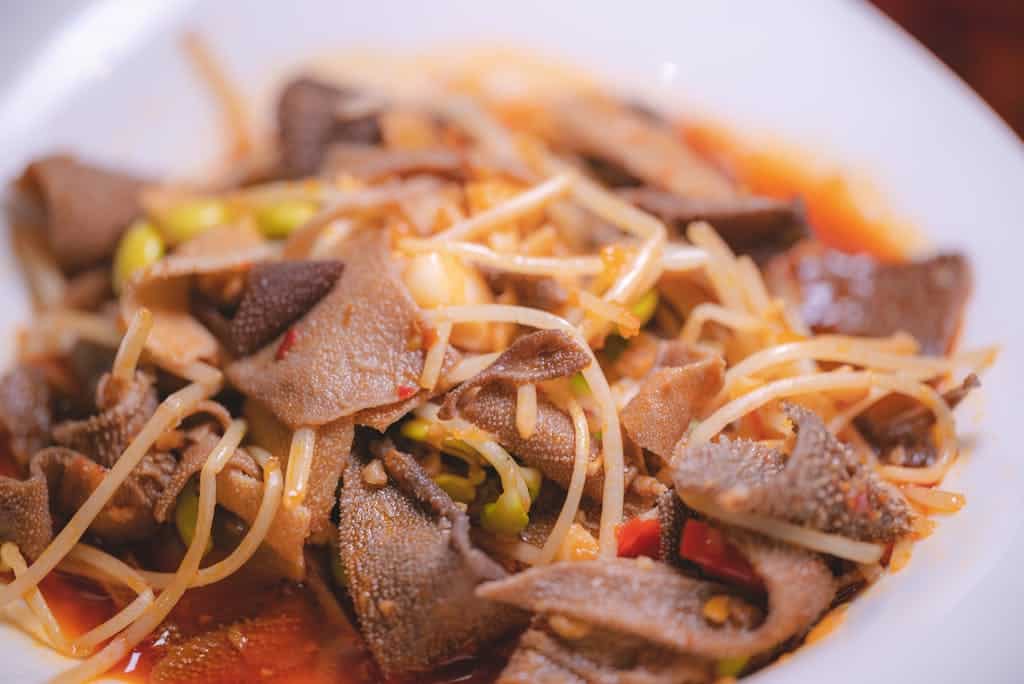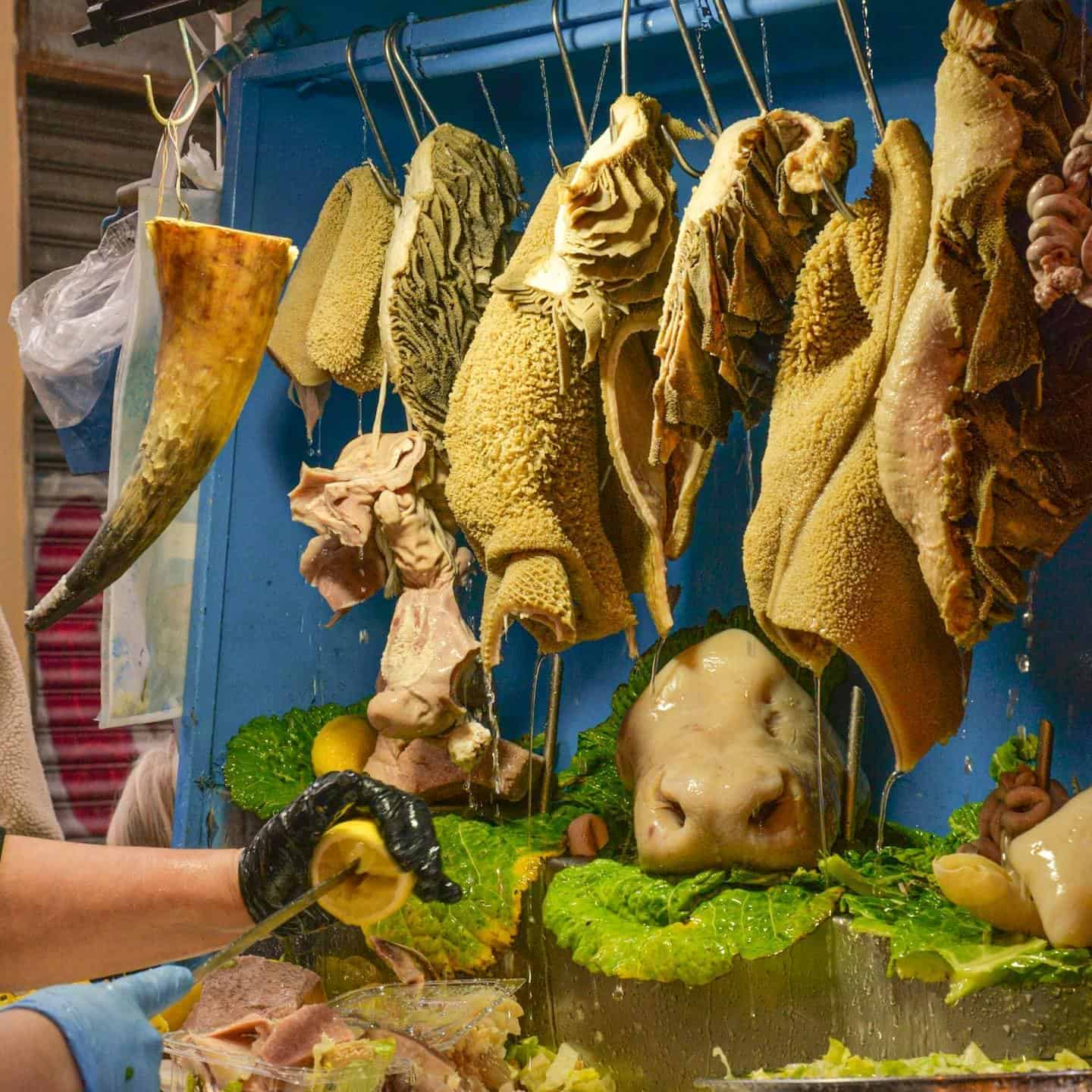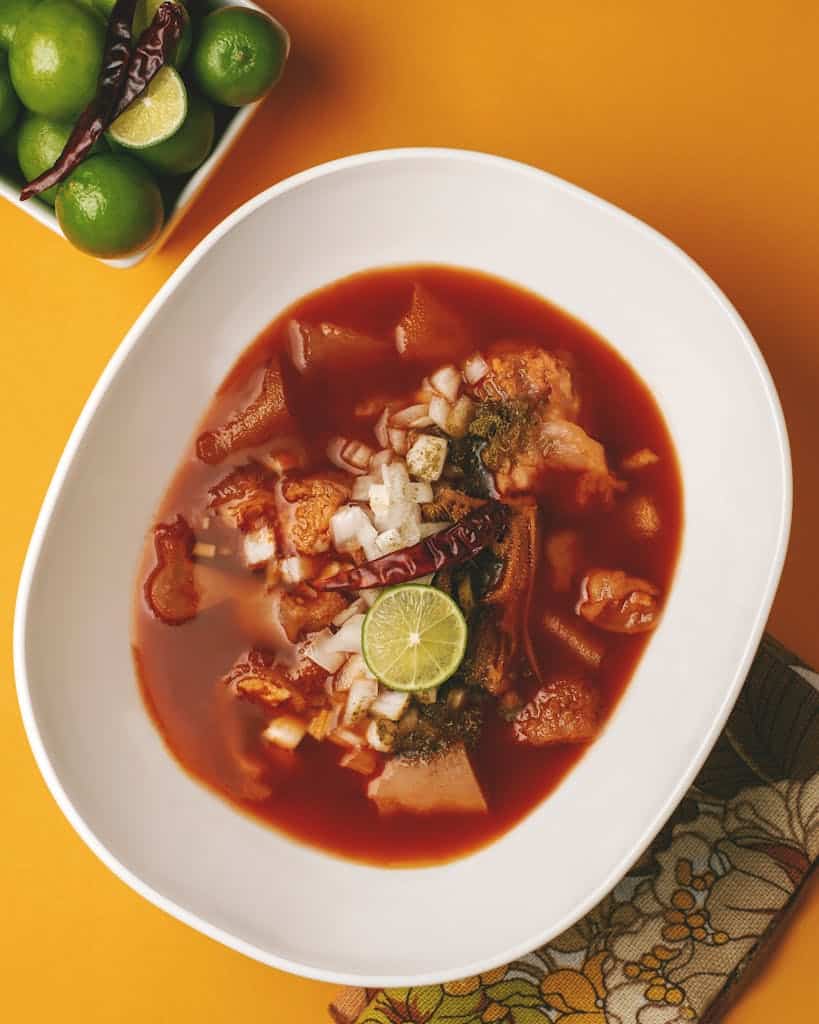Honeycomb Tripe: A Culinary Delicacy and Nutritional Powerhouse
Honeycomb tripe is a flavorful and nutritious ingredient that has been a staple in traditional cuisines worldwide. But what exactly is honeycomb tripe? It’s the edible lining of the cow’s second stomach, characterized by its unique honeycomb texture. This culinary treasure has been a prized ingredient in many global cuisines, featuring prominently in dishes like menudo in Mexico, pho in Vietnam, and lampredotto in Italy. Its rich flavor and versatility have made it a beloved component of many traditional recipes. In this series, we’ll delve into the world of honeycomb tripe, exploring its culinary significance, nutritional benefits, and preparation methods.
Key Takeaways
- Honeycomb tripe is a nutrient-rich food with a unique texture and taste.
- Widely used in soups, stews, and stir-fries.
- Packed with protein, essential minerals, and low in fat.

What is Honeycomb Tripe?
Definition and Texture
Honeycomb tripe is derived from the second stomach of cattle, known as the reticulum. This unique ingredient is characterized by its honeycomb-like pattern, which provides a chewy texture that absorbs flavors exceptionally well. The texture is often described as tender, yet firm, making it an ideal component in a variety of dishes.
Types of Tripe
While honeycomb tripe is a specific type of tripe, there are other varieties available, including blanket, book, and reed tripe. Each type has its unique characteristics that make it suited for specific recipes. Honeycomb tripe stands out due to its exceptional ability to absorb flavors and its tender, yet firm, texture.
Global Culinary Use
Honeycomb tripe is a staple in many global cuisines, including Asian, European, and Latin American cooking. It’s a versatile ingredient that’s used in a range of dishes, from soups and stews to stir-fries and braises. Examples of its global use include menudo in Mexico, callos in Spain, and pho in Vietnam. Its rich flavor and versatility have made it a beloved component of many traditional recipes.
Nutritional Benefits of Honeycomb Tripe
Honeycomb tripe is not only a flavorful and versatile ingredient, but it also offers a range of nutritional benefits that make it an excellent addition to a healthy diet.

High in Protein
Honeycomb tripe is an excellent source of protein, providing essential amino acids that are vital for muscle repair and growth. This makes it an ideal component of high-protein diets, including keto and paleo diets.
Low in Fat
Unlike other meats, honeycomb tripe is extremely low in fat, making it a heart-healthy option. This also makes it suitable for calorie-conscious individuals who are looking to reduce their fat intake.
Rich in Essential Minerals
Honeycomb tripe is a rich source of essential minerals, including:
- Zinc: Supports immune health and wound healing
- Iron: Aids in red blood cell production
- Phosphorus: Important for bone and teeth health
These minerals are vital for maintaining overall health and wellness.
Source of Collagen
Honeycomb tripe is a rich source of collagen, a protein that supports skin elasticity, joint health, and gut lining repair. This makes it an excellent ingredient for anti-aging and overall wellness.
Supports Digestive Health
The connective tissue in honeycomb tripe promotes healthy digestion, and the gelatin from tripe helps soothe the gut lining. This makes it an excellent ingredient for individuals with digestive issues.
Low Glycemic Index
This nutritious food has a low glycemic index, which means it does not spike blood sugar levels. This makes it suitable for diabetics and individuals with blood sugar concerns.
Overall, honeycomb tripe is a nutrient-dense ingredient that offers a range of health benefits. Its high protein content, low fat levels, and rich mineral profile make it an excellent addition to a healthy diet.
How to Prepare Honeycomb Tripe
Preparing honeycomb tripe requires some attention to detail, but with the right techniques, it can be a delicious and nutritious addition to your meals.
Cleaning Honeycomb Tripe
Before cooking, it’s essential to clean the tripe thoroughly. Here’s how:
- Wash the tripe under cold water to remove any impurities.
- Remove any excess fat or impurities from the tripe.
- Parboil the tripe in water with vinegar or lemon to eliminate any strong odors.
Cooking Techniques
There are several ways to cook honeycomb tripe, each resulting in a unique texture and flavor. Here are some popular techniques:
- Boiling: The first step in tenderizing the tripe. Boil the tripe in water or broth until it’s tender.
- Simmering: Cook the tripe on low heat for 1-2 hours until it’s tender and falls apart easily.
- Stir-Frying: Slice the tripe thinly and stir-fry it with your favorite vegetables and seasonings. This adds a crispy texture to the dish.
Popular Recipes
Honeycomb tripe is a versatile ingredient that’s used in many traditional dishes around the world. Here are some popular recipes to try:
- Menudo (Mexico): A spicy tripe soup made with hominy and served with tortillas.
- Pho (Vietnam): Aromatic broth made with thinly sliced tripe, noodles, and herbs.
- Lampredotto (Italy): A sandwich featuring slow-cooked tripe, served with a tangy sauce.
- Stir-Fried Tripe: A quick and flavorful Asian-style dish made with stir-fried tripe, vegetables, and soy sauce.
By following these steps and techniques, you can unlock the full flavor and nutritional potential of honeycomb tripe. Experiment with different recipes and cooking methods to find your favorite way to prepare this versatile ingredient.
Honeycomb Tripe in Global Cuisines
Honeycomb tripe is a versatile ingredient that’s used in many traditional dishes around the world. Its unique texture and flavor make it a popular choice in many global cuisines.
Traditional Tripe Dishes in Asian Cuisine
In Asian cuisine, honeycomb tripe is a staple ingredient in many traditional dishes. often included with beef bones or bone in meat.
Tripe is a vital component of pho in Vietnam, a popular noodle soup. In China, it’s commonly stir-fried with vegetables or added to hot pots, creating a nutritious and flavorful meal.

Tripe in European Cuisine
n European cuisine, tripe is a beloved ingredient in many traditional dishes.
• Italy: Tripe is used in lampredotto, a Florentine delicacy that’s rich in flavor and history.
• Spain: It’s central to callos a la madrileña, a traditional stew that’s slow-cooked in a rich broth with vegetables and spices, making it a hearty and comforting meal..
Honeycomb Tripe in Latin American Cuisine
In Latin American cuisine, honeycomb tripe is a staple ingredient in many traditional dishes.
Mexico features menudo and pancita, two popular soups. In Peru, it’s used in soups like sopa de mondongo, a hearty and flavorful stew.

African Cuisine
In African cuisine, it is a popular ingredient in many traditional dishes. It’s often used in West African soups and stews, where it’s slow-cooked with vegetables and spices to create a rich and flavorful broth.
These are just a few examples of the many ways honeycomb tripe is used in global cuisines. Its versatility and nutritional value make it a popular choice in many traditional dishes around the world.
Health Benefits vs. Potential Drawbacks
Honeycomb tripe is a nutrient-dense food that offers several health benefits, but it also has some potential drawbacks to consider.
Benefits
Tripe is an excellent source of protein and is low in fat, making it a nutritious and healthy addition to a balanced diet. It is also an affordable and accessible source of nutrition, making it a great option for those on a budget.
Drawbacks
One of the main drawbacks of honeycomb tripe is that it requires thorough cleaning and long cooking times to make it palatable. This can be time-consuming and may not be suitable for everyone. Additionally, it is not suitable for people with certain dietary restrictions, such as kosher or halal diets.
Considerations for Consumption
To ensure that honeycomb tripe is safe and enjoyable to eat, it’s essential to follow proper preparation and cooking techniques. This includes ensuring that the tripe is thoroughly cleaned and cooked to avoid any potential odor or tough texture. It’s also important to choose fresh, high-quality tripe from reputable butchers to ensure that it is safe to eat.
Where to Buy and Store Honeycomb Tripe
Honeycomb tripe can be found in various markets and online stores. Here are some tips on where to buy and how to store it:
Buying Tips
Honeycomb tripe is available at specialty butcher shops, Asian or Latin markets, and online. When purchasing tripe, look for fresh, pale-colored tripe with a clean scent. Avoid tripe with a strong odor or slimy texture.
They even started selling it at my local grocery store.
Storing Tripe
To keep honeycomb tripe fresh, store it in an airtight container in the refrigerator and use it within 1-2 days. If you don’t plan to use it immediately, you can also freeze it for longer storage. Frozen tripe can be stored for up to 3 months. When freezing, make sure to wrap the tripe tightly in plastic wrap or aluminum foil to prevent freezer burn.

FAQs About Honeycomb Tripe
Here are some frequently asked questions about honeycomb tripe:
What does honeycomb tripe taste like?
Honeycomb tripe has a mild flavor that absorbs seasonings and broth well, making it a versatile ingredient for many recipes.
Is honeycomb tripe healthy?
Yes, tripe is a nutritious food that is high in protein, low in fat, and rich in nutrients like vitamins and minerals. Make this and other nose-to-tail products part of your superfood diet to promote good health
How long does it take to cook honeycomb tripe?
The cooking time for honeycomb tripe varies depending on the recipe and desired tenderness, but it typically takes around 1-2 hours to cook.
Can you freeze cooked tripe?
Yes, cooked tripe can be frozen in an airtight container for up to 3 months.
What is the best way to reduce the odor of tripe?
To reduce the odor of tripe, clean it thoroughly and boil it with vinegar or lemon to eliminate any strong smells.
These are just a few of the most common questions about honeycomb tripe. By understanding more about this ingredient, you can better appreciate its unique characteristics and incorporate it into your cooking repertoire.
Conclusion
Honeycomb tripe is a versatile and nutritious ingredient that offers a range of health benefits and culinary uses. From its high protein content to its rich mineral profile, tripe is an excellent addition to a balanced diet. Whether you’re looking to try new recipes or explore traditional dishes from around the world, This is a great option to consider.
By understanding the benefits and drawbacks, as well as how to prepare and store it, you can unlock its full potential and enjoy a delicious and nutritious meal. So why not give honeycomb tripe a try and discover the many wonders it has to offer?
Discover more from Maxwell Person
Subscribe to get the latest posts sent to your email.